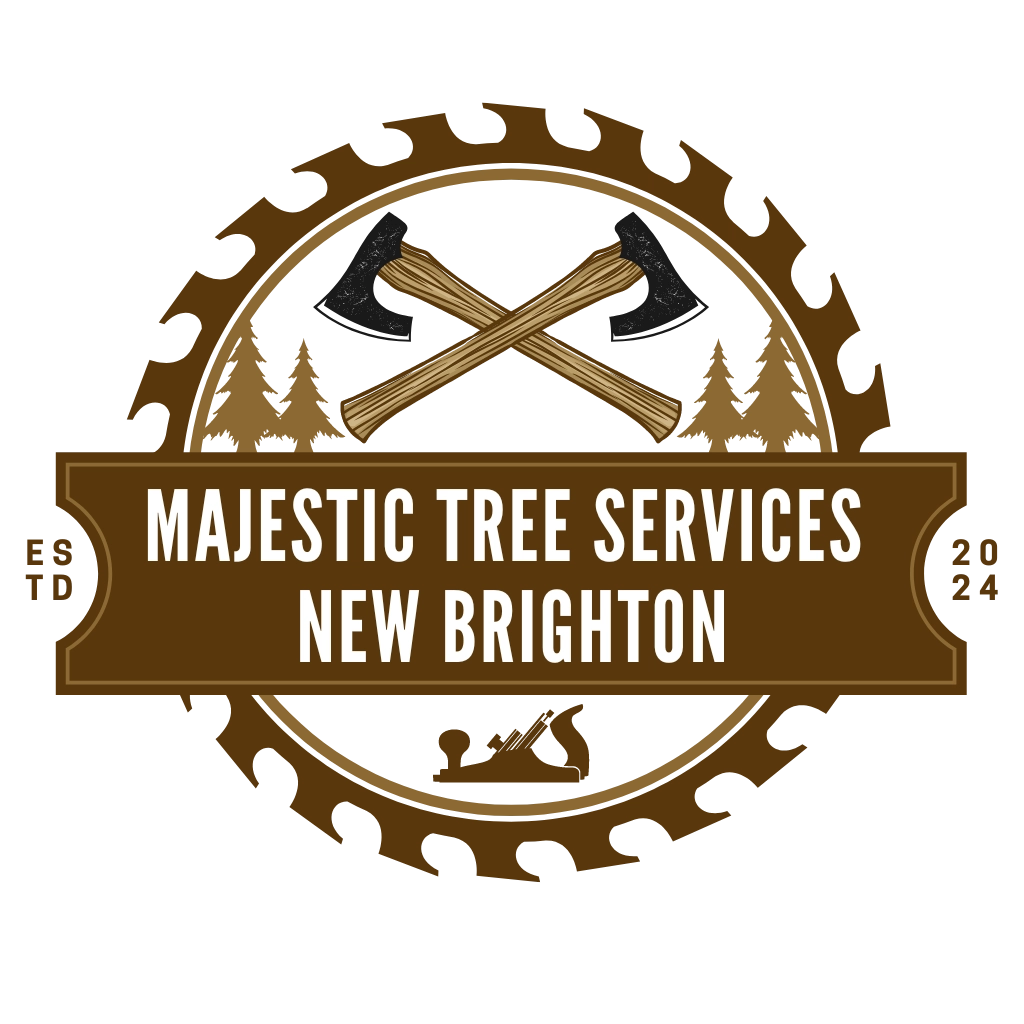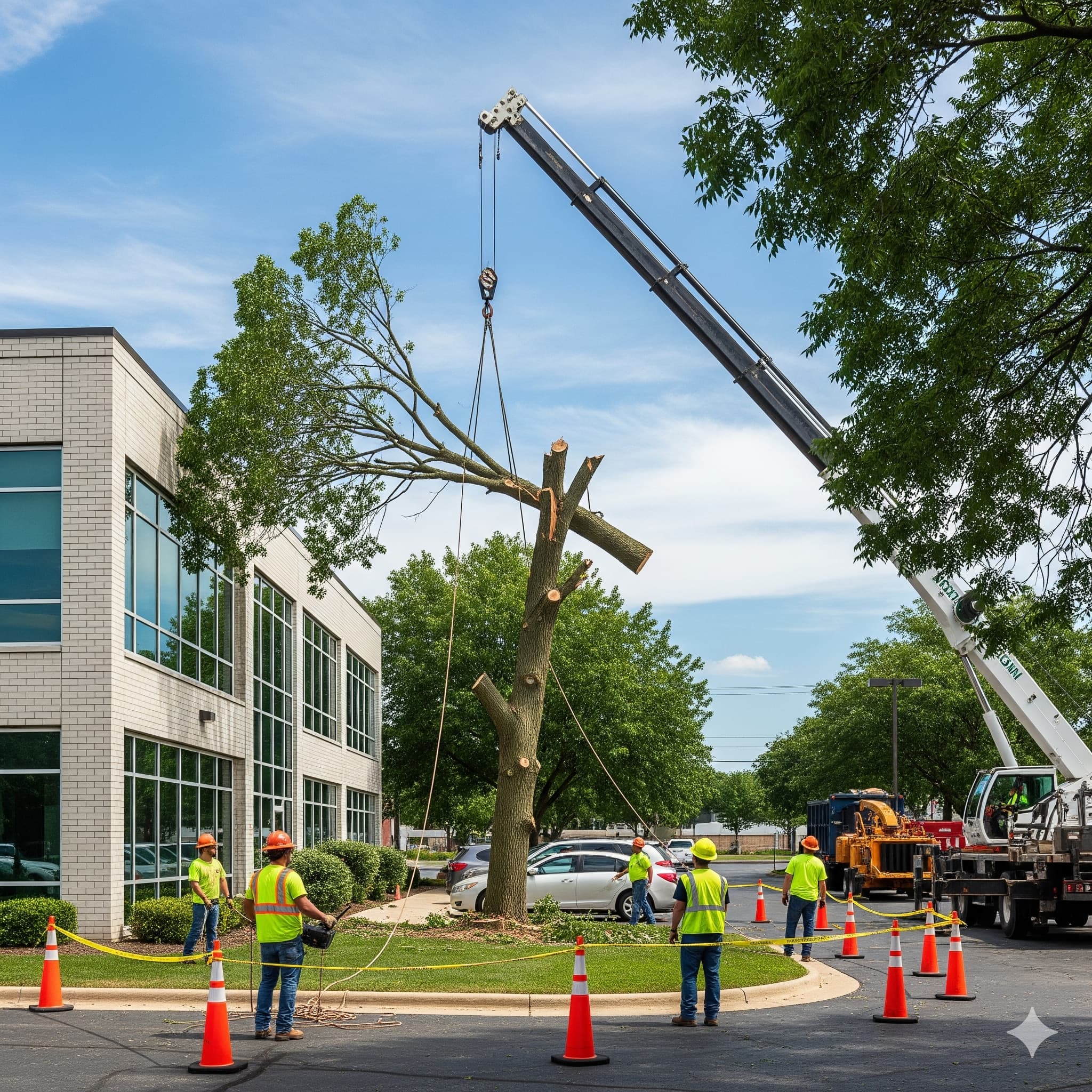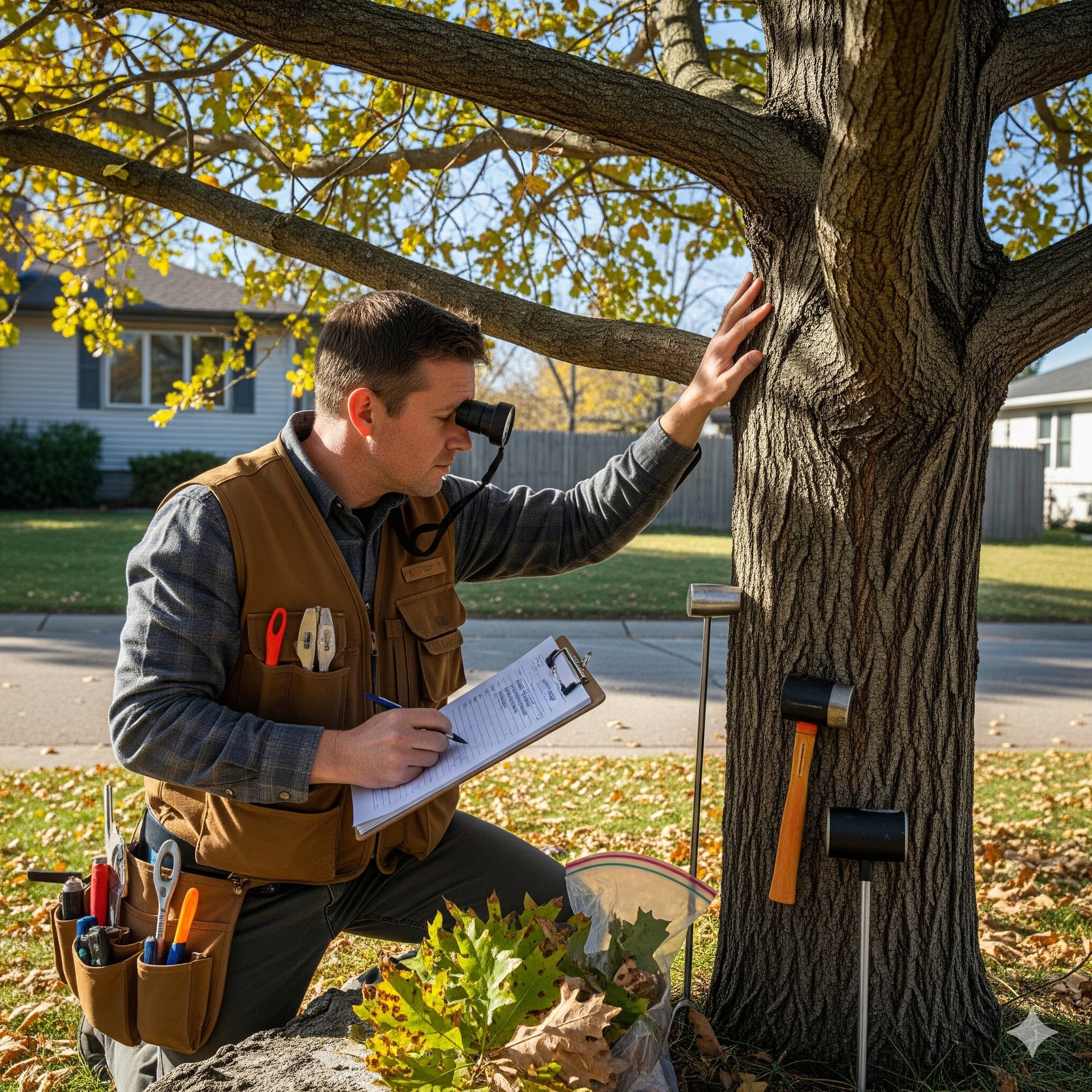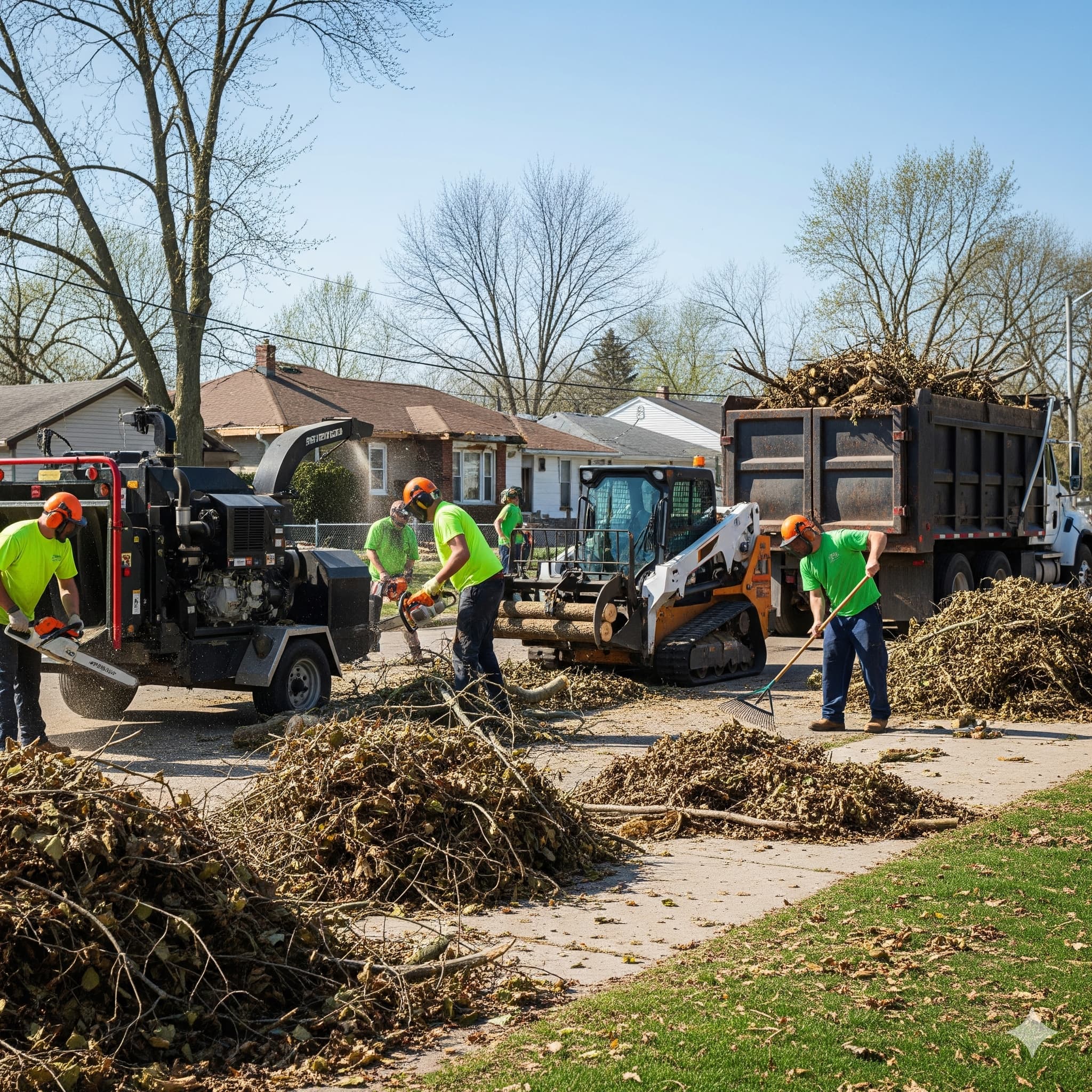
Tree Cutting Service for Hazardous Limb Removal in New Brighton
Tree Cutting Service New Brighton
Professional tree cutting service for hazardous limb removal is essential for maintaining safety and protecting property throughout New Brighton, Minnesota. At Majestic Tree Services New Brighton, we specialize in identifying and safely removing dangerous branches before they become problems, serving homeowners from the tree-lined streets near Long Lake Regional Park to the established neighborhoods around the New Brighton History Center.
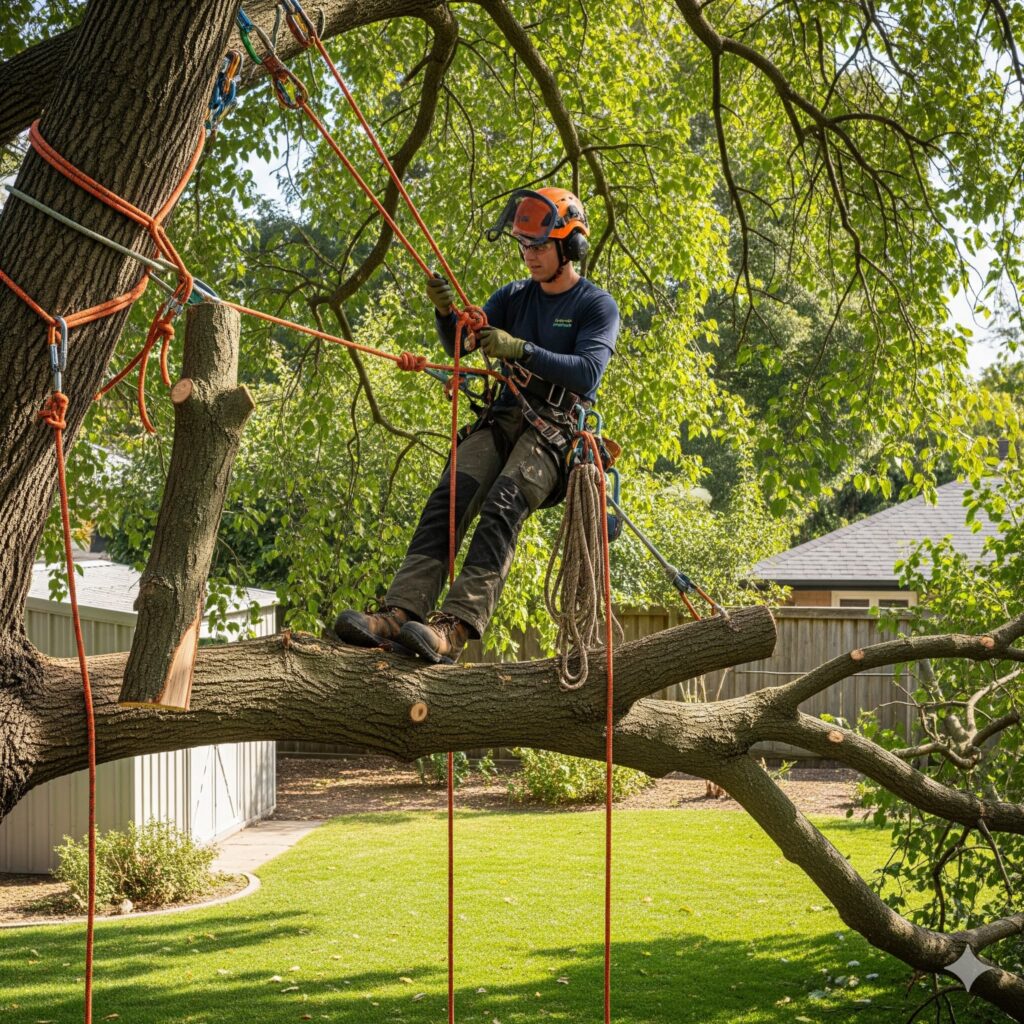
Identifying Hazardous Limbs in New Brighton
Hazardous limbs pose significant risks to people, property, and infrastructure throughout New Brighton’s mature urban forest. These dangerous branches may appear healthy from ground level but contain structural defects, disease, or damage that make them prone to failure. Professional hazard assessment identifies these risks before they result in property damage or safety incidents.
Common hazardous conditions include dead or dying branches, splits or cracks in branch unions, branches with excessive lean or end weight, and limbs damaged by storms, construction, or disease. In New Brighton’s established neighborhoods, where mature trees overhang homes, vehicles, and walkways, hazardous limb identification and removal become critical for ongoing safety.
Types of Hazardous Limb Situations
Dead and Diseased Branches
Dead or diseased branches are among the most common hazardous limb situations requiring professional tree cutting services. These branches lose structural integrity over time and can fall without warning, particularly during wind events or when loaded with snow or ice.
Disease progression, including oak wilt, Dutch elm disease, and Emerald Ash Borer damage, common in New Brighton, often creates multiple hazardous branches throughout affected trees. Professional assessment identifies disease-related hazards and determines appropriate removal strategies to protect property and remaining tree health.
Storm-Damaged Limbs
Minnesota’s severe weather frequently creates hazardous limb situations through wind damage, ice loading, and lightning strikes. Storm-damaged branches may appear stable but contain internal damage or stress cracks that make them prone to delayed failure.
Post-storm hazard assessment identifies damaged branches that pose ongoing risks, even when they remain attached to the tree. Professional tree cutting services remove these hazards before they cause additional damage or safety incidents.
Structural Defects and Weak Unions
Structural defects, including co-dominant stems, included bark and weak branch unions, creating hazardous conditions that require professional evaluation and corrective cutting. These defects often develop over decades and may not be apparent without professional assessment.
In New Brighton’s mature tree population, structural defects are common in older oak, maple, and ash trees that developed without proper pruning during their youth. Professional tree cutting addresses these defects while preserving as much of the tree’s structure and appearance as possible.
Professional Hazard Assessment Techniques
Visual Tree Assessment
Professional hazard assessment begins with a systematic visual evaluation of tree structure, health, and environmental factors. Certified arborists use established assessment protocols to identify defects, evaluate risk levels, and determine appropriate removal strategies.
Visual assessment includes evaluation of branch attachment points, wood condition, growth patterns, and environmental factors that influence branch stability. This comprehensive approach identifies both obvious hazards and subtle defects that might not be apparent to property owners.
Advanced Diagnostic Tools
Complex hazard situations may require advanced diagnostic tools, including resistograph testing, sonic tomography, or other specialized equipment to evaluate internal wood condition and structural integrity. These tools help determine which branches require removal and which can be preserved through other management techniques.
Advanced diagnostics are particularly valuable for heritage trees or specimens with high landscape value where preservation is desired but safety concerns exist.
Safe Tree Cutting Procedures
Proper Cutting Techniques
Safe hazardous limb removal requires proper cutting techniques that protect both workers and property while preserving remaining tree health. Professional arborists use three-cut pruning methods, proper branch collar identification, and appropriate timing to minimize tree stress and promote healing.
Proper cutting techniques prevent bark stripping, promote compartmentalization, and reduce the risk of disease entry through pruning wounds. These techniques are particularly important for valuable trees throughout New Brighton’s established neighborhoods.
Rigging and Lowering Systems
Hazardous limb removal in residential settings often requires specialized rigging and lowering systems to safely control branch removal without damaging surrounding property. Professional equipment allows fothe r precise placement of removed branches even in confined spaces.
Advanced rigging techniques enable safe removal of large hazardous limbs over structures, vehicles, and landscaping, minimizing property damage while efficiently addressing safety concerns.
Equipment and Safety Protocols
Professional Climbing and Aerial Equipment
Hazardous limb removal requires professional climbing equipment, aerial lifts, and safety gear designed for tree work applications. Certified arborists maintain current training in equipment use and safety protocols necessary for working at height in challenging conditions.
Professional equipment enables safe access to hazardous branches throughout the tree canopy while providing necessary fall protection and emergency response capabilities for complex removal situations.
Chainsaw Operation and Maintenance
Professional tree cutting services use commercial-grade chainsaws and maintain strict safety protocols for their operation. Proper chainsaw selection, maintenance, and operation techniques are essential for safe, efficient hazardous limb removal.
Professional chainsaw operation includes understanding cutting dynamics, kickback prevention, and proper body positioning to ensure worker safety during hazardous limb removal operations.
Timing and Seasonal Considerations
Species-Specific Timing
Hazardous limb removal timing varies by tree species and local disease concerns. Oak trees should not be pruned from April through October due to oak wilt transmission risks, while elm trees require year-round caution due to Dutch elm disease concerns.
Professional tree cutting services understand species-specific timing requirements and coordinate hazardous limb removal to minimize disease transmission risks while addressing immediate safety concerns.
Emergency vs. Routine Removal
Immediate safety hazards require emergency response regardless of timing considerations, while less urgent hazardous limb situations can be scheduled for optimal timing. Professional assessment determines urgency levels and appropriate response timing for each situation.
Emergency hazardous limb removal may require protective measures, including wound treatment, to minimize disease risks when removal cannot be delayed for optimal timing.
Property Protection During Removal
Hazardous limb removal in New Brighton’s residential settings requires careful attention to property protection, including structures, vehicles, landscaping, and utility infrastructure. Professional tree cutting services use protective measures and specialized techniques to minimize collateral damage during removal operations.
Property protection includes establishing work zones, using protective covering, and employing rigging systems that control branch placement during removal. These measures protect both the immediate work area and neighboring properties from damage during hazardous limb removal.
Post-Removal Tree Care
Hazardous limb removal often requires follow-up care to promote tree health and prevent future hazard development. This may include wound treatment, structural pruning, or ongoing monitoring to ensure tree stability and health following major limb removal.
Professional post-removal care helps maintain tree health while addressing any additional structural concerns that may become apparent following hazardous limb removal.
Prevention and Ongoing Maintenance
Regular tree maintenance and hazard assessment prevent many dangerous limb situations from developing. Proactive pruning, health monitoring, and structural evaluation identify potential problems before they become immediate hazards.
Preventive maintenance programs help New Brighton property owners maintain tree safety while preserving the valuable urban forest that enhances our community’s character and property values.
Professional Tree Cutting Service Selection
When hazardous limbs threaten safety in New Brighton, choosing qualified professional tree cutting services ensures safe, effective removal that protects people and property. Professional services maintain the proper licensing, insurance, and certification necessary for complex tree cutting operations.
We provide comprehensive hazardous limb assessment and removal services throughout New Brighton, using advanced techniques and professional equipment to address safety concerns while preserving tree health and property values. Our certified arborists understand the unique challenges of working in established neighborhoods and prioritize both safety and environmental stewardship.
Hazardous limb removal requires professional expertise to ensure safety and protect property. Trust experienced tree cutting professionals who understand the complexities of hazard assessment and safe removal techniques necessary to maintain New Brighton’s beautiful urban forest.
